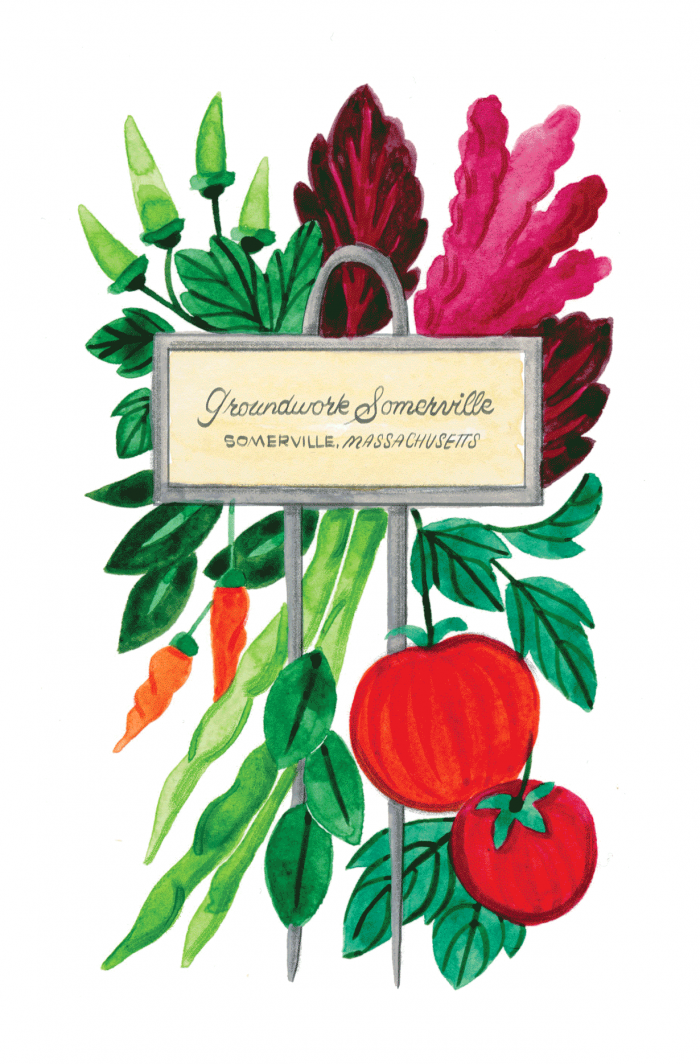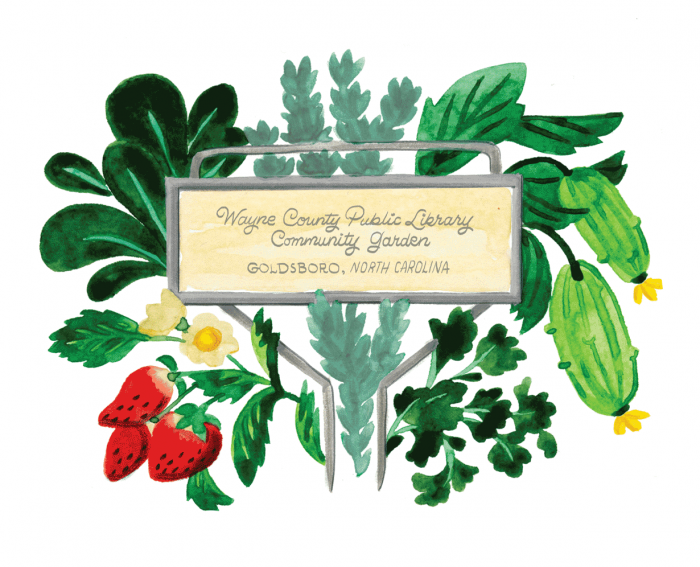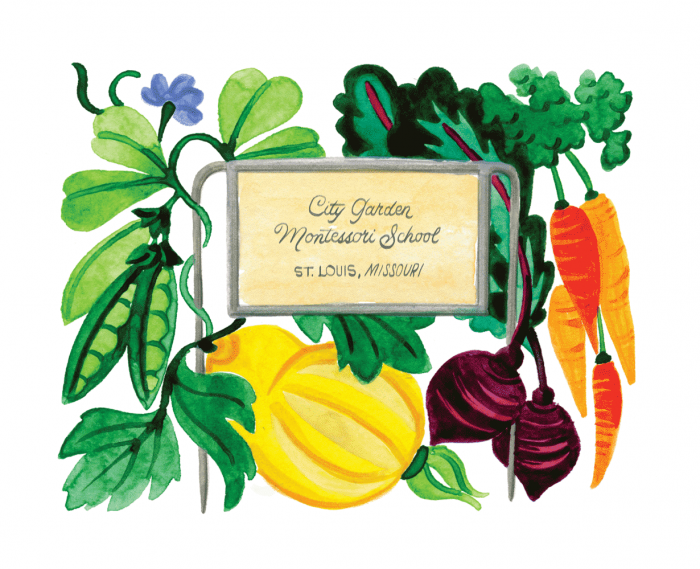“Mention food and social justice now, and you’re in the in-crowd.” This is how Karen Washington, urban farmer and community activist, characterizes the school garden movement. “It’s the hip thing to do now,” she says.
The statistics support Washington’s view. The number of school garden programs in the United States doubled between 2007 and 2013, according to research by the Bridging the Gap program—and numerous school-aged youth have purportedly benefitted. In her article “Serving Up Food Justice At School,” school garden advocate Michele Israel traces a virtuous circle: “When students eat vegetables they’ve grown in a school garden and then share their experience at home by requesting certain vegetables at meal time, they nurture a healthy curiosity about nutrition and food politics that may increase their food sovereignty significantly.”
As the popularity of the school garden movement surges, however, some educators and community stakeholders have experienced pitfalls. Many short-term staff enter communities with which they are unfamiliar, fulfill their requirements to kick-start a school garden, and move away. Washington labels this phenomenon, common in many school intervention projects, as “parachuting.”
Programs not based in the communities they serve may also inadvertently trigger students of color—for example, when workers don’t take the time to investigate a potentially complicated relationship with agriculture. In Grace Bello’s article in The Atlantic, “Farm-to-Table in Communities of Color,” D.C. farmer and food activist Natasha Bowens reports that some immigrant youth say, “Why would I go back to the farm that my immigrant parents worked so hard to get us off of?” In this way, Bowens says, the movement can feel like a step backward.
For African-American youth in particular, agriculture may call to mind a troubled historical memory of enslavement and racialized oppression. At an Edible Schoolyard site, for instance, educator Claire Stanford overheard a student remark, “This is some slavery sh-t.” When Bowens spoke with young people of color about farming and food sovereignty, one youth responded, “Why would I want to go back to picking cotton?”
Without adequate equity training, school garden programs may be ineffective at best or, at worst, unintentionally reinforce structural inequity and systemic racism. But when educational gardens directly address (rather than sidestep) issues of race and class, they can become a platform for partnership, healing and meaningful action. The following three profiles feature culturally responsive school gardeners who model these strengths.

For Jess Bloomer, deputy director of Groundwork Somerville, listening is a core tenet of her anti-bias garden programming. Bloomer runs the program’s Green Team, a youth employment program focusing on urban agriculture, environmental justice, civic engagement and job skills. As a white-identified, middle-class woman, she cites the danger of falling into a “charity work” trap with her students. “To think that school garden programs are just about nutrition education is to fall into the ‘savior’ dynamic and miss a wealth of opportunities,” Bloomer says.
Bloomer warns white school gardeners to beware of the phenomenon that environmental sociology professor Julie Guthman labels “universalism”: the assumption that values held primarily by members of largely white communities are “normal” and widely shared. Bloomer steers clear of the false assumption that her racial and socioeconomic privilege afford her authority on any issue. Instead, she shifts the paradigm of her work toward one of partnership and cultural humility.
To enact this equity mindset, Bloomer suggests doing some research before planning even begins. She and her students conducted community surveys in four languages about which vegetables local families wanted to see at the Green Team’s mobile farmers’ markets. They then created their crop plan based on the community’s responses.
Bloomer also recommends finding the experts living in the community and partnering with them. After creating the crop plan, she and the Green Team identified three mentor farmers in Somerville: one from Bangladesh, one from Brazil and one from Haiti. These mentors taught workshops on how to grow specific vegetables like callaloo, the edible leafy greens from amaranth plants popular in Caribbean cuisine. The team also incorporated jiló, a type of eggplant popular in Brazil, into the crop plan. The three mentor farmers spoke with the youth about why these crops were valuable.
Bloomer thinks about food as a health benefit that goes beyond scientific nutrient value and fat content; it’s also a way people show they care about each other, tell stories, and find identity and connection. When she served as the program director and garden educator with Edible Schoolyard in New Orleans, for example, her team designated part of the garden space for the community to heal itself after Hurricane Katrina. Here, kids could engage therapeutically with nature, curiosity and beauty.
Following the success of Edible Schoolyard’s healing space, they decided to designate one of the gardens for holding restorative justice circles—structured mediations to address interpersonal conflict and build community. Bloomer says these gardens functioned as building blocks for discussing power and how our decisions impact all living beings—whether we know it or not. “Before talking about academic integration and nutrition, we asked, ‘How can this be a place for social emotional learning and support, for forging healthy community bonds?’” she explains.

Shorlette Ammons, equity in food systems associate with the Center for Environmental Farming Systems at North Carolina State University, gardens to heal and reclaim her agrarian African-American identity. “Young people of color, especially black youth, sometimes get stuck relating to the slave labor experience and they don’t want to go back to it,” she says. “I want to put a different lens on the experience. Agriculture is an innate part of who I am, and having the opportunity to do it differently is really important.”
Ammons recalls growing up working for a white farmer with her entire family. “It was a lineage thing,” she says. “It was me and my twin sister and my cousins and my aunts and uncles. We were committed to the family every summer, this white farm-working family that was only slightly better off than we were. The relationship to land and the agrarian spirit was muddy for us in a way that it may not have been for them, but it was a shared experience that was a part of both of our heritages.”
Alongside many other local organizations and volunteers, Ammons recasts that experience in the light of self-determination. “I found home in the garden again, and it was very freeing,” she remembers. “That is what sovereignty feels like.”
While working as a children’s librarian and garden coordinator, Ammons and a group of dedicated individuals built a garden to reflect every ethnicity represented in their county. After researching 33 different ethnicities in Wayne County, they interviewed community members about foods popular in their home cultures. They built gardens with “funky geometrical designs,” dedicating each bed to a particular racial or ethnic group’s food culture. “Its purpose wasn’t just about food,” Ammons recalls. “It was about using food as a tool to rebuild an inclusive narrative and reclaim public space.”
Additionally, Ammons sees gardening as a ritual for healing the relationship between people of color and the land. She cites the work of Ruby Sales, civil rights icon and spiritual activist, as influential to her agricultural philosophy. “Children aren’t born biased,” she asserts, referencing Sales’ work. “It’s rituals that indoctrinate them. We can offer different rituals that support their being anti-racist, their awareness of what an inclusive society looks like.”

Faybra Hemphill, director of racial equity, curriculum and training at City Garden Montessori School, sees her position as a call to action.
At City Garden, staff members incorporate the four core goals of anti-bias education—developing identity, appreciating diversity, recognizing injustice and taking action—into all of their professional development. Each teacher is asked to apply a racial equity lens to every decision and action made for the school community.
The school curriculum combines these goals with the Montessori theory of development, which emphasizes that in order to educate the whole child and nurture human potential, students must experience the outdoors in a safe and meaningful way. To effectively assemble these pieces, students learn how to garden and grow their own food.
You have to make sure you’re connecting with the people this will directly affect. Ask them what they want. Care about what they want and do what they say.
City Garden regularly recalibrates its evolving equity lens by participating in regional caucuses, attending multi-day anti-racism trainings, and hosting an intergroup dialogue series called Colorbrave. Each meeting in the Colorbrave series explores one manifestation of systemic racism, including environmental racism. In its last session, the group discussed food access, food deserts and the ways in which spending time outdoors can improve quality of life.
Following this training, Hemphill and her colleagues strategized about how City Garden could disrupt the environmental quality-of-life gap between “black and white people, between the Latinx community and white people.” They opened the City Garden grounds to the community on weekends, removed any signage restricting access, and designated a rotating on-call volunteer to respond to any incidents, concerns or questions.
City Garden also designed its own Racial Equity Impact Assessment or REIA. A REIA systematically examines how different racial and ethnic groups will likely be affected by a proposed action or decision. The assessment uses quantitative and qualitative questions to ensure that the school’s culture, processes and procedures—including the school garden program—match its commitment to anti-racism.
For the school’s Garden Night, for example, the outdoor coordinator and the volunteer coordinator referred to the REIA to ask questions such as “What is the content of this program? What is the purpose? How does this event relate to our mission? Who’s involved in the decision making? Were students of color invited to make decisions about this program?” The REIA aggregates the data and assesses it according to a set of equity standards.
“If the findings show that the program doesn’t relate to our mission and commitment to racial justice, then maybe we shouldn’t have it,” Hemphill says. “We don’t need more programs and events just to have them. Everything that we have should be grounded in our commitment as a neighborhood school with an anti-racist, anti-bias focus.”
Hemphill emphasizes that people have to be trained to use an anti-bias lens in order to make informed decisions that will affect entire populations of people. “You have to make sure you’re connecting with the people this will directly affect. Ask them what they want. Care about what they want and do what they say.”
Finally, says Hemphill, be willing to compromise. “We don’t want to continue doing what we have done as large institutions,” she says. “We want to stop ignoring the people we were allegedly built to serve.”
Ehrenhalt is the grants and school programs manager for Teaching Tolerance.
Unpacking “Parachutes”
Parachuting perpetuates two major myths of white supremacy. First, it bolsters the problematic mentality that white people are called upon to “save” underserved neighborhoods of color. While individual actors often possess good intentions, entrenched structural racism means that these intentions can be tainted by this “savior” mindset. The result? White-led organizations try to “fix” communities without consulting its members about their needs or recognizing the expertise of the people closest to the issues.
Second, “parachuting” relies on white supremacist ideology similar to Manifest Destiny: the notion that whites not only can, but are destined to, explore and settle any region of their choosing. White privilege, in other words, comes with a sense of entitlement to enter into any culture that, to the “explorer,” is not native, and then leave again as they see fit.
Karen Washington notes how this phenomenon is similar to colonization, exploiting people and land for profit.
“That’s using people for something under the auspices of social justice,” she says.
